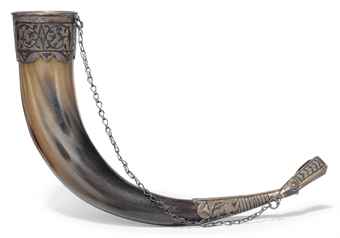There are few wine regions so obscure as those of the
country of Georgia. Many people can’t even point Georgia out on a map, let
alone name a wine grape varietal from it. Yet in Georgia lies the origin of all
our modern-day winemaking, without which there would be no Bordeaux, Tuscany,
or Napa Valley. So for those of you who love drinking a fine Burgundy or a nice
Barolo, I suggest you pay your respects to the oldest wine region in the world
and say gaumarjos (cheers) with a
glass of red Saperavi or white Rkatsiteli in hand!
 |
| Georgia's wine regions. |
According to Greek myths, wine was flowing in the Kolkheti
region (home to the legendary Golden Fleece) since well before the 8th century BC. At this time, people of
the South Caucasus had discovered the magical transformation that would take
place when wild grape juice was left in shallow pits through the winter. The perfect climate, mineral-rich soil, and
abundant water available in the Caucasian Mountain area made wine production
easy. (The Kolkheti region still makes a famous fortified white port-style wine from Tsitska and Tsolikauri grapes today)
 |
| Kvevrei discovered near Gori |
There is evidence of winemaking and trade with Persia and
Greece dating to 6,000 BC. By about 1,000 years later the tradition of using
kvevris (qvevris) had been established. These are clay vessels like amphorae
lined with beeswax and sealed with earth, buried halfway in the ground, and
used as fermenters and aging containers for the wine. The kvevri is often still the vessel of choice for vinification.
.jpg/220px-Vendanges_en_Kakhetie_(B).jpg) |
| A depiction of Rtveli |
Winemaking became intricately intertwined with Georgian
society over the many centuries. Rtveli
is an ancient harvest festival that continues to this day, taking place in late
September. Feasts and vintage-themed music are part of the festivities
celebrating vine and wine. In some regions people still drink wine from kantsi, or cleaned, boiled, polished animal
horns from herd animals.
 |
| A Georgian silver-mounted drinking horn |
Another expression of the depth of the grape vine’s roots in Georgian culture can be seen in the symbol of the Greek Orthodox church: a cross made of dried grape vines, tied together with the hair of Saint Nino. Legend has it that Saint Nino, who preached Christianity in Kartli, wandered bearing this vine cross. Christianization of Georgia increased the influence of wine from the 4th century AD.
 |
| Saint Nino of Cappadocia with her vine cross |
Given Georgia’s role in the history of wine, one may expect
that people would be more familiar with this ancient source of viticulture and viniculture.
Unfortunately Georgia has witnessed a few hurdles to the internationalization
of its wines. Mikhail Gorbachev’s “dry law” in the mid-1980’s put a huge damper
on sales of Georgian wines. Authenticity issues within the Georgian wine market
due to mislabeling and use of imported grapes, along with rising political tensions,
led to the 2006 Russian embargo on Georgian wines, hurting sales further.
Additionally, the international palate has not necessarily been calibrated to
the flavor profiles of Georgian wines. But with the recent spike of interest in
“orange wine,” a style that originated in Georgia, and a new appreciation for
earthy, terroir-driven reds, perhaps attention will be focused on Georgia once
again.
 |
| A vineyard in Kakheti |
Today winemaking in Georgia is recovering, with wine tourism
in the country rising every year. The opening of international trade has led to
an increase in quality and exposure. Hopefully soon more examples will be
available on the US market. There are a few out there now… look for the
following wines to try:
Rkatsiteli – Translates
as “red stem.” One of the oldest vinifera
grapes, Rkatsiteli originated in Georgia
and spread throughout Russia and Eastern Europe to become one of the most
widely planted white grapes in the world. It produces acidic, crisp white wines
with spicy and floral notes, which can develop quite a bit of complexity. It
also makes some fantastic orange wines. Pheasant’s Tears Rkatsiteli is a
delicious wine readily available in the US.
Mtsvane – Also known
as Mtsvane Kakhuri. Translates to “new,
young, and green.” Mtsvane makes a
soft, more rounded, fruitier wine and is often blended with Rkatsiteli for balance. Try Teliani Valley’s Tsinandali to sample one of these blends. Bagrationi’s sparkling wines
also use a good amount of Mtsvane.
 |
So get out there and try some true old-world wine from
Georgia. After all, the country did give us our word for wine (ghvino) in the first place!
- Sarah







